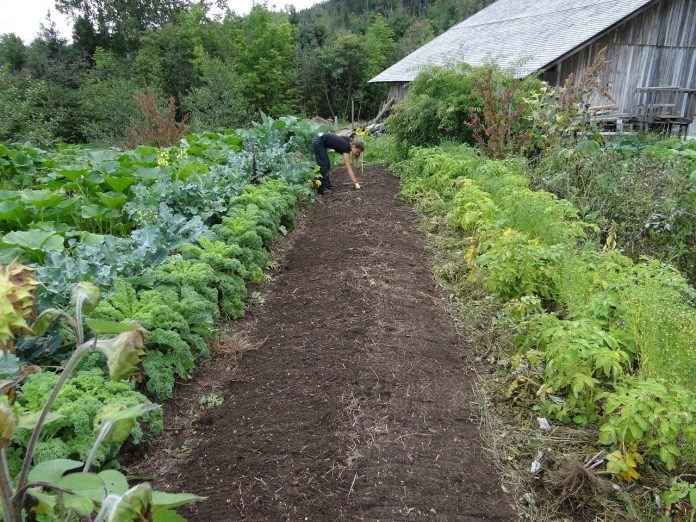The growing season isn’t quite over in Northeast Ohio, but we’re nearing the end of it. Over the next month, home gardeners will need to start preparing their vegetable gardens for winter.
Mapping out this year’s garden, soil testing, removing plant material and covering the surface of your garden before winter will help ensure next year’s success.
Map out your garden
Mapping out your garden will help you remember where you planted things and aid you in establishing a crop rotation for next year.
Establishing a good crop rotation helps replenish the soil, improves yields and prevents pests and diseases from becoming established in your garden. Keep 3 to 4 years of garden maps to avoid planting vegetables within the same plants family in the same location for a few years.
When drawing out your map, make notations for any issues or successes you encountered this year. This will help you select vegetable varieties that grew well the year before and replace the ones that didn’t with varieties that are resistant to the encountered problems.
Test your soil
A good rule of thumb is to have your soil tested every three years so you understand whether the major nutrients required for plant growth are present and balanced, and to learn more about your soil, such as pH, organic matter percentage, soil type and its ability to hold nutrients. Your soil test results will be provided with recommendations to amend your soil for growing vegetables.
Fall is an ideal time to test soil, so you can amend it and allow the amendments to naturally work into the soil over the winter, ensuring your garden is ready in the spring.
Remove plant material
Pests and diseases can overwinter in plant debris, so removing plant material after harvest is a good practice.
Healthy plant material should be broken up into smaller pieces and added to your compost pile. Diseased and pest-infested plants and plant parts should be disposed of by burning them or bagging them and throwing them in the trash can. If unhealthy plant parts are composted, they can be reintroduced in your garden next spring when you use the compost.
Leave the roots of beans and peas in your garden to overwinter as they are beneficial for microorganisms that live in the soil. By cutting the tops and leaving the roots behind, you’re allowing microorganisms to live and feed off of them throughout the winter.
Clean your tools
Just as pathogens can survive in plant debris, they can survive on tools. Before putting your tools away, they should be cleaned and sterilized.
Additionally, your seeding trays and any pots you plan to reuse should be cleaned and sanitized before they are put away.
Cover the surface of your garden
Covering the surface of your vegetable garden with organic mulch, compost or a cover crop will help protect the topsoil from erosion, improve the health of the soil and boost yields in next year’s garden.
Applying 3-6 inches of organic mulch or compost over the surface of your garden will create a home and provide food for the microorganisms in the soil. You can use shredded leaves or clean straw that’s free of seed heads and weeds. Microorganisms will break it down while it lies on the surface of your garden throughout the winter. In the spring, you can plant directly in the material or work it into the top 6 inches of your garden soil.
Cover crops are another option to improve soil during the winter. Cover crops provide habitat and a food source for microorganisms, suppress weeds and return organic material and nutrients to the soil. Cover crops help rebuild soil structure and improve overall soil health.
A couple of good options for fall planting are winter wheat or cereal rye. They both product shoot growth in the fall, die back in the winter and regrow in the spring. They should be turned into the soil in the spring before top growth is more than 6 inches tall. Make sure the crop is given two weeks to decompose after being turned in before planting vegetables.
Find more detailed information about planting cover crops by reading How to plant a cover crop in your vegetable garden.
Related Content
- How to plant a cover crop in your vegetable garden
- How to optimize your compost pile
- A home gardener’s guide to crop rotation











